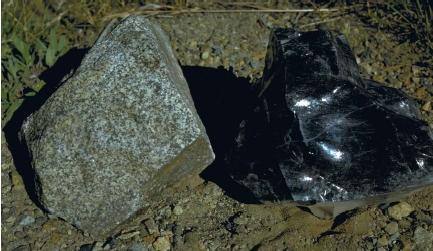Rocks are composed of minerals, which are natural inorganic (nonliving) substances with specific chemical compositions and structures. A rock may consist of many crystals of one mineral or combinations of many minerals. Hundreds of different kinds of minerals make up hundreds of different kinds of rocks. Geologists, scientists who study Earth and rocks, divide rocks into three main groups: igneous rocks, sedimentary rocks, and metamorphic rocks. These distinctions are made on the basis of the types of minerals in the rock, the shapes of individual mineral grains, and the overall texture of the rock. All of these properties indicate the environment, pressure, and temperature in which the rock formed.

0 comment/s:
Post a Comment